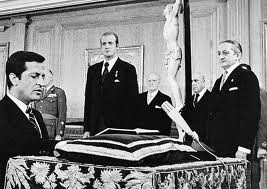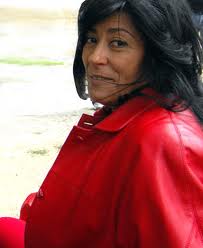Spanish Literature in the Democracy

The death of General Francisco Franco on November 20, 1975 signaled the end of a 35-year-long dictatorship and the beginning of what came to be known as the period of 'transition' towards Spanish Democracy. Still highly relevant in Spain, this transition was essentially political and idiosyncratic, but like any other drastic shift in the political direction of a country, the people involved were, naturally, the same people.
This circumstance was no different in the literary scene, where the production during the early days of the Spanish Democracy was dominated by some of the more familiar faces among the intellectual elite of the dying days of the Franco era. Some of them we have mentioned already in the section devoted to Spanish Literature in the Franco era. Others, like Juan Marsé had already broken into the scene before 1975, but only now did they truly find their feet.
La Movida
Born in Barcelona in 1933, Marsé achieved popularity with Últimas tardes con Teresa, (1966) an engaging social critique wrapped in a love story whose protagonists are worlds apart in the social ladder. It merited him the Premio Biblioteca Breve and launched him on a relatively successful literary career, but it would only be towards the start of the Spanish Democracy that he would reach prominence, with The Girl with the Golden Panties (1978).

Later turned into a film, The Girl with the Golden Panties gives a fair reflection of the social repercussions that came with the end of the dictatorship. The sense of freedom that pervaded Spanish society was soon taken to a political level, whereby just about everything, from sex to drugs and everything in between, was turned into a symbol of defiance, especially by the younger generation. It was the start of La movida.
Roughly ten years later, Almudena Grandes would storm into the literary establishment with a raunchy account of the sexual life of a fifteen-year-old female protagonist, Lulu, who explicitly tells about her sexual experiences and longings, taking the reader through tempestuous relations and occasional encounters with everything from transvestites to school teachers.
Published in 1989 and made into a film the following year, The Ages of Lulu depicted in full crudeness the legacy that 40 years of repression had bestowed upon the generation of La movida.
Life After the Rapture
But once the furious rapture of freedom came back down from the heights where La movida had placed it, literature continued to thrive in the 80s, with new and emerging authors carving a name for themselves with sophisticated arguments. One such rising star of the early days of Spanish Democracy was Enrique Vila-Matas.
Also from Barcelona, Vila-Matas has been publishing regularly since the early '70s, when his Mujer en el espejo contemplando el paisaje (Woman in the Mirror Gazing the Landscape) appeared. However, it would not be until the new millennium, with El viaje vertical (The Vertical Journey) that he would fully exploit the potential of meta-literary references entwined with narrative techniques that he had explored in the past.

Another imposing figure in the literary world of Spanish Democracy is Javier Marías. Born in Madrid in 1951, he published his first novel, Los dominios del lobo in 1970. At the time he also worked as script writer and translator, completing the Spanish version of The LIfe and Opinions of Tristram Shandy in 1976.
Since then, Javier Marías has reached the zenith of the literary establishment, first with his novel, Tomorrow in the Battle Think On Me, an engaging account of personal conflicts and intrigues which distances the reader from the action and establishes a close connection with the narrator, instead.
Winner of the prestigious Rómulo Gallegos Prize with Tomorrow in the Battle Think On Me, Javier Marías embarked on an ambitious project with the new millennium, as he published the first part of his trilogy Your Face Tomorrow in 2002. The following installments came in 2004 (Fever and Spear) and 2007 (Poison, Shadow and Farewell), and essentially succeeding in placing Javier Marías right in the centre of the literary establishment both in Spain and abroad.
